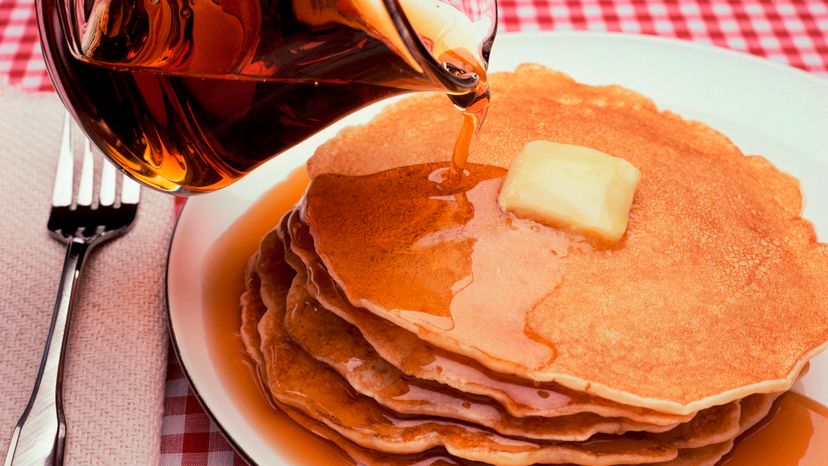
Maple syrup comes from the sap of maple trees. In the early spring, if you cut the bark of (or drill a hole into) certain species of maple trees, clear sap will leak from the cut. This sap is very thin -- almost like water -- but it contains about 2-percent sugar (sucrose). If you boil this watery sap to drive off the water, you eventually get maple syrup. It takes 30 or 40 gallons of sap to make 1 gallon of maple pancake syrup. One tree might yield 10 gallons (38 liters) of sap over the course of four weeks.
The sugar or rock maple (Acer saccharum) and the black maple (Acer nigrum) are the two trees that yield the best syrup. Sometimes people also tap the red maple.
Advertisement
Before 1940, people collected the sap in buckets by drilling a hole into the tree and pounding in a wooden tube for the bucket to hang from. Today, most commercial operations use plastic taps and plastic tubing so the sap can flow to a central location. The sap is evaporated in large, flat pans that are heated with wood, gas or electricity.
States and provinces that produce maple syrup include Quebec and Ontario in Canada and Maine, Massachusetts, Michigan, New Hampshire, New York, Ohio, Pennsylvania, Vermont, and Wisconsin in the United States. The best days for sap collection are days where the temperature is above freezing during the day and below freezing at night before bud formation.
Here are some interesting links:
Advertisement